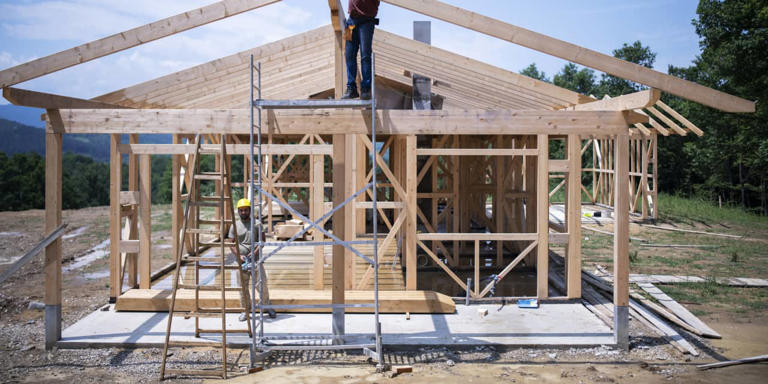Robert Dietz, the chief economist of the National Association of Home Builders (NAHB), recently highlighted a significant economic challenge regarding inflation and its impact on housing in the United States. According to Dietz, the current situation presents a unique dilemma because inflation in shelter costs, which is currently rising at a year-over-year rate of 5.4%, is posing obstacles to the Federal Reserve’s target inflation rate of 2%.
Inflation in shelter costs encompasses various components such as rent, homeowners’ equivalent rent (which measures what homeowners would pay to rent their homes), and other housing-related expenses. These costs have been climbing, driven by factors including strong demand for housing, limited supply, and rising construction costs. This trend has significant implications, not only for the affordability of housing but also for the broader economy as housing costs play a crucial role in overall inflation measures.
Dietz emphasized that to effectively address and reduce inflation in shelter costs, thereby bringing down the overall inflation rate to the Federal Reserve’s target of 2%, increasing the nation’s housing supply is essential. A key barrier to expanding housing supply has been the availability and cost of construction financing. Dietz noted that creating a more favorable interest rate environment for construction and development loans would be instrumental in achieving this goal. Lower borrowing costs for developers could incentivize more construction activity, thereby alleviating supply constraints and potentially tempering housing cost increases.
The Federal Reserve’s monetary policy decisions are pivotal in this context. Financial markets are currently pricing in expectations of the first interest rate cut by the Federal Reserve to occur in September. Mortgage rates, which closely follow movements in the 10-year Treasury yield, are critical for the housing market as they directly influence affordability and housing demand. Lower mortgage rates can spur homebuying activity and support housing market conditions, while higher rates could dampen demand and affordability.
Against this backdrop, the NAHB/Wells Fargo housing market index for June provided further insights into current market conditions. The index declined by 2 points to 43, marking its lowest reading since December. This index serves as a leading indicator of the housing market’s health, with readings above 50 indicating positive sentiment. The decline was reflected across all three key components: present single-family sales, sales expectations for the next six months, and buyer traffic.
Notably, the report highlighted that 29% of respondents reported cutting prices to stimulate sales, the highest share since January. This suggests that builders are adjusting pricing strategies to navigate market conditions characterized by softer demand and affordability challenges.
The housing market index is closely correlated with housing starts data, which tracks the commencement of construction on new homes. Housing starts are a critical economic indicator, reflecting the pace of new residential construction and its contribution to economic growth and employment.
In conclusion, Dietz’s analysis underscores the intricate interplay between inflation dynamics, interest rates, and housing market performance. Addressing inflationary pressures in shelter costs through increased housing supply and supportive financial conditions remains crucial for achieving broader economic stability and meeting inflation targets set by the Federal Reserve. As policymakers and market participants navigate these challenges, ongoing monitoring of mortgage rates and housing market indicators will be essential to gauge the sector’s resilience and future trajectory.
